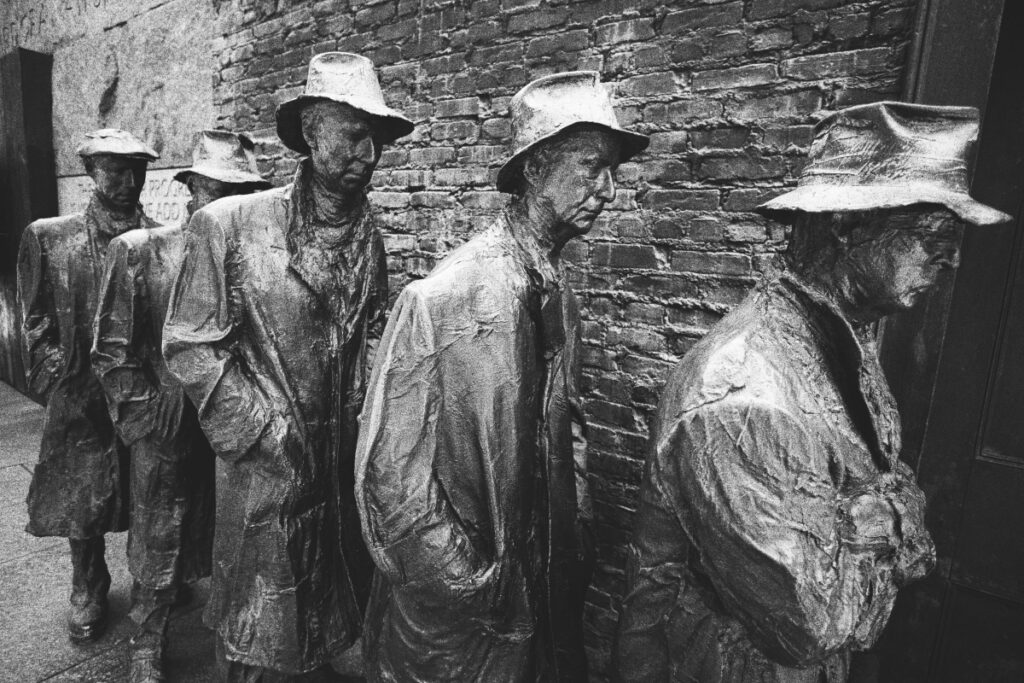
Table of contents
Introduction
The author views World War 2 (WW2) from a triple-stage approach in an attempt to somewhat simplify a complex war and increase its comprehension for all readers of these blogs (Parts 1-3).
The western stage in WW2 is primarily about the United States. To better understand the sentiments and focus of the US during WW2, it is important to take a wide-angle view of the period spanning from WW1 to WW2. This period may be artificially divided into three-time segments as follows:
WW2 Part2: USA
- Period Leading to 1933 (Rollercoaster Ride: Roaring 20s, Great Depression)
- Pre-World War 2 – 6 YEARS 1933-1939 (During Depression)
- World War 2 – 6 YEARS 1939-1945 (Post-Depression)
1. Period Leading to 1933
Let us briefly look at the time segment from World War 1 (WW1) to 1933.
Although WW1 lasted about four years and four months (July 28, 1914 – November 11, 1918), the US only entered WWI on April 6, 1917, participating for about 1 year and 7 months. The US joined its allies Britain, France, and Russia under the presidency of Woodrow Wilson.
WW1 ended at 11 a.m. on November 11, 1918, the eleventh day of the eleventh month at the eleventh hour. It is known as Armistice Day because on that day Germany signed an armistice (an agreement for peace).
European Economy
Following WW1, the damaged European economy continued to struggle. For example, in Europe, Germany’s economy suffered significant inflation, as seen by the following numbers:
January 1921: Number of marks to the US dollar = 64
November 1923: Number of marks to the US dollar = 4,200,000,000,000
US Rollercoaster Ride: Upside
In contrast to Europe, the US economy roared through the 1920s, which became known as the “Roaring Twenties” or the Jazz Age (1920-1929). This was the upside of this period. During this nine-year period, there was mass consumerism, prohibition laws went into effect (enforced by the 18th Amendment to the US Constitution), women were given the right to vote (19th Amendment), and the Harlem Renaissance occurred. It is of interest to note that the Prohibition Era overlapped the Roaring Twenties or the Jazz Age with an increase in crime, until the 21st Amendment, ratified in 1933, ended prohibition.
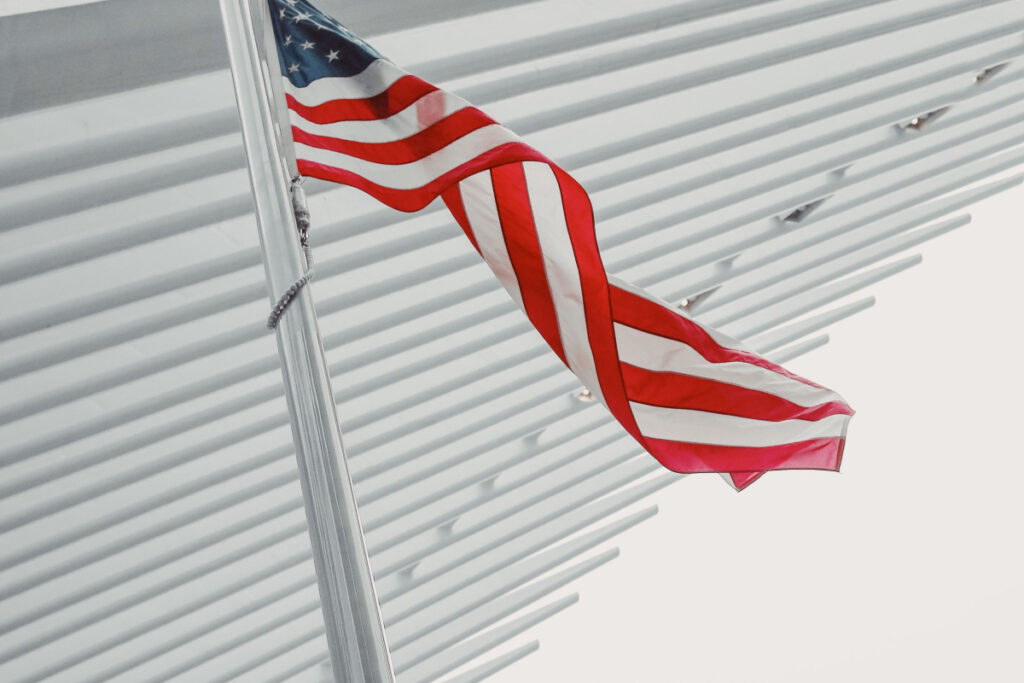
This unique period in US history had a significant impact on the economic, social, and political atmosphere in the US. During this time, the landscape had flipped, with more Americans residing in the cities compared to the farms. The almost doubling of the US’s total wealth from 1920 to 1929 gravitated the masses toward a greater consumer society. New technologies like vacuum cleaners and washing machines permitted people more free time. Clothing, refrigerators, radios, phonograph records, movies, dances (Charleston, flea hop, cake walk), affordable automobiles (Ford Model T cars), easy credit, and much more helped to change the American scene in the 1920s.

US Rollercoaster Ride: Downside
However, the Roaring Twenties came to a screeching halt with the New York Stock Exchange (NYSE) Crash on “Black Tuesday,” October 29, 1929. On this historic day, more than sixteen million shares were sold on the NYSE and investors lost about $14 billion (in 2020 US dollars, about $212 billion). This crash commenced a major downward economic spiral not only in the US but globally.
US Leaders
Herbert Hoover
Prior to “Black Tuesday,” Herbert Hoover had become the 31st president of the US on March 4, 1929. Although Hoover took office during the prosperous period of the Roaring Twenties, his time in office soon changed to one of doom and gloom with economic disaster.
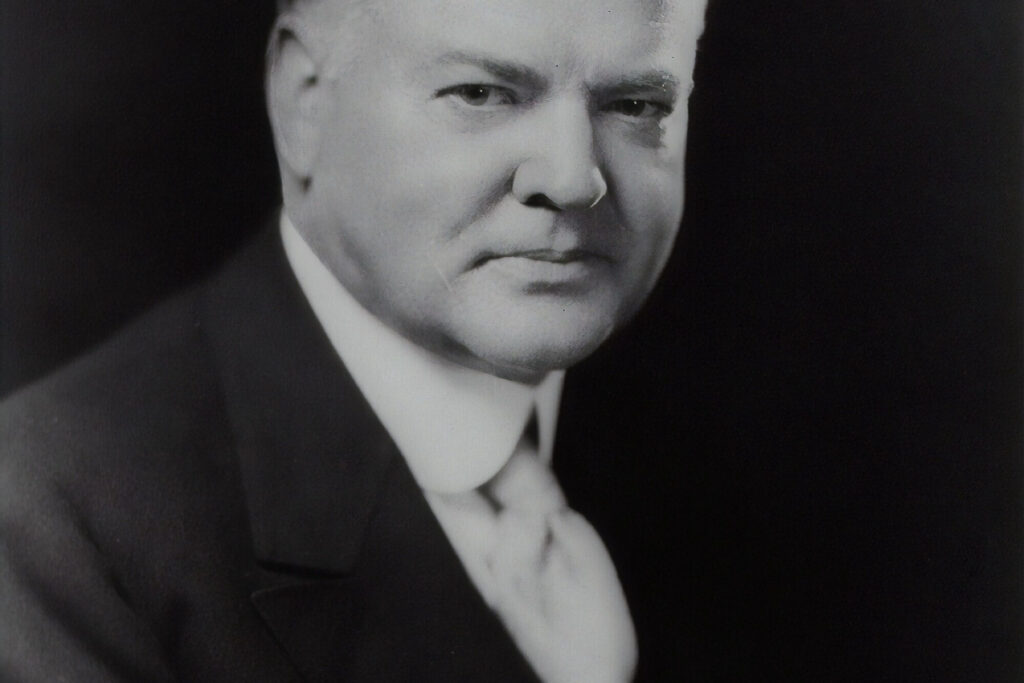
As a result of the stock market crash, when it came time for the next presidential election, Hoover was defeated at the polls by a landslide.
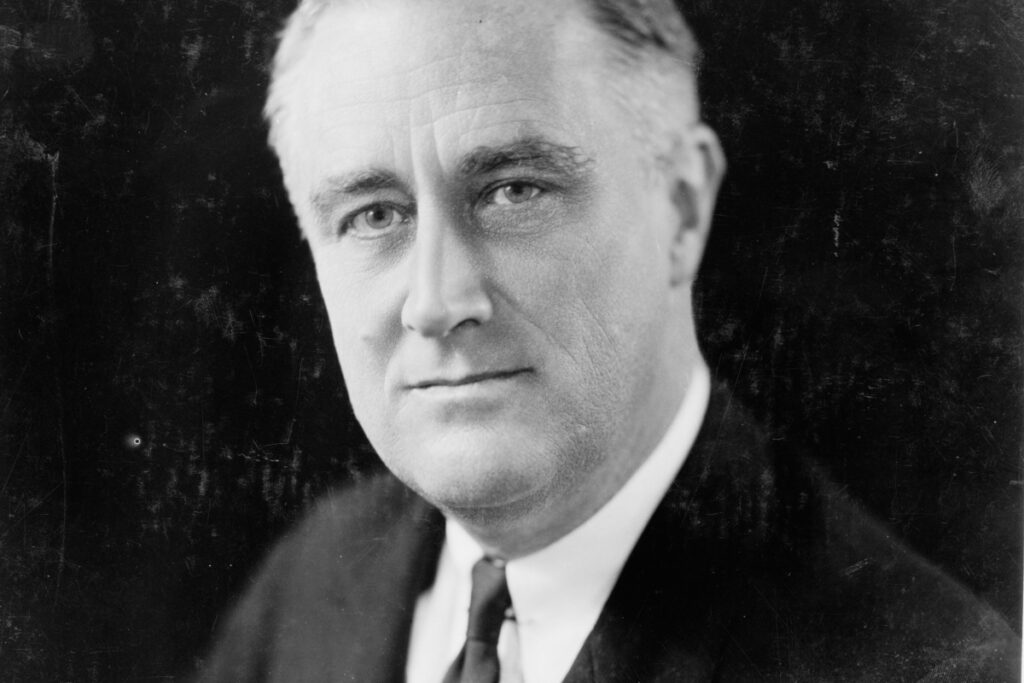
Franklin Delano Roosevelt
On March 4, 1933, Franklin D. Roosevelt (FDR) had the first of his four presidential inaugurations. The presidency of FDR, fifth cousin of President Theodore Roosevelt, spans the period we are interested in, namely 1933-1939 and 1939-1945. FDR led the country during both the Great Depression and WW2. Harry S. Truman became the 33rd President on April 12, 1945 when FDR died from a stroke (cerebrovascular accident, CVA), secondary to brain metastasis from forehead skin melanoma, at his “Little White House” retreat home in Warm Springs, Georgia.
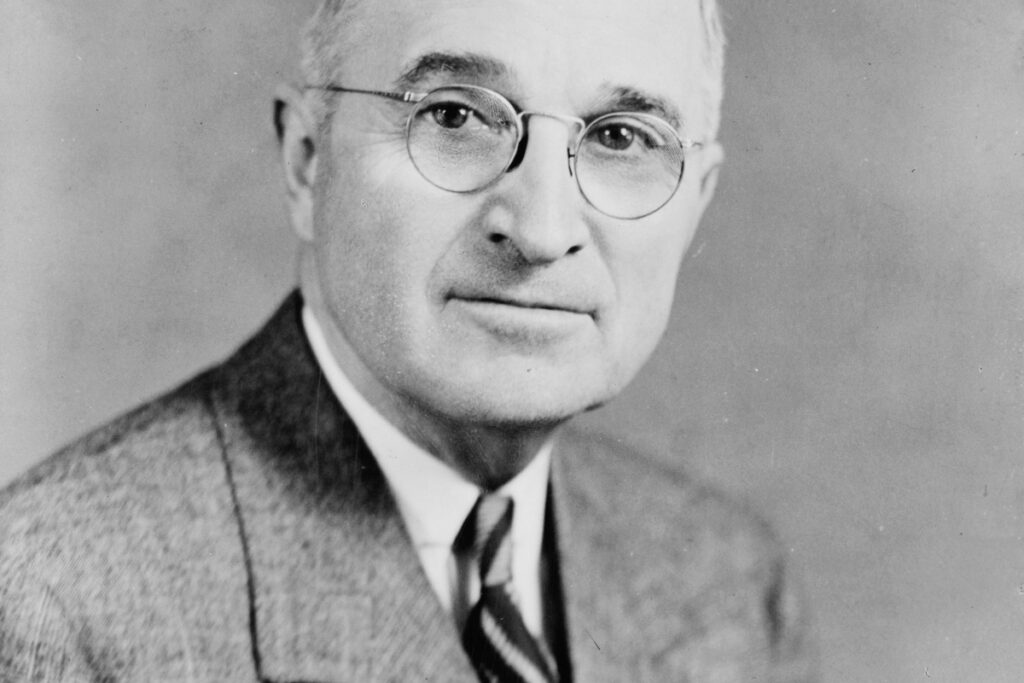
Harry S. Truman
President Truman would play a significant role in bringing WW2 to an end.
Europe
Adolf Hitler in Germany
In Europe, only thirty-three days before FDR was inaugurated as president, President Paul von Hindenburg had appointed Adolf Hitler as chancellor of Germany on January 30, 1933 (See World War II – Simplified! – Part 1).
2. Pre-World War 2 – 6 YEARS 1933-1939 (During Depression)
This entire six-year period of Pre-WW2 was engulfed by the Great Depression, which ended in 1939. During this period, the US’ primary focus was on national issues while trying to augment the economy.
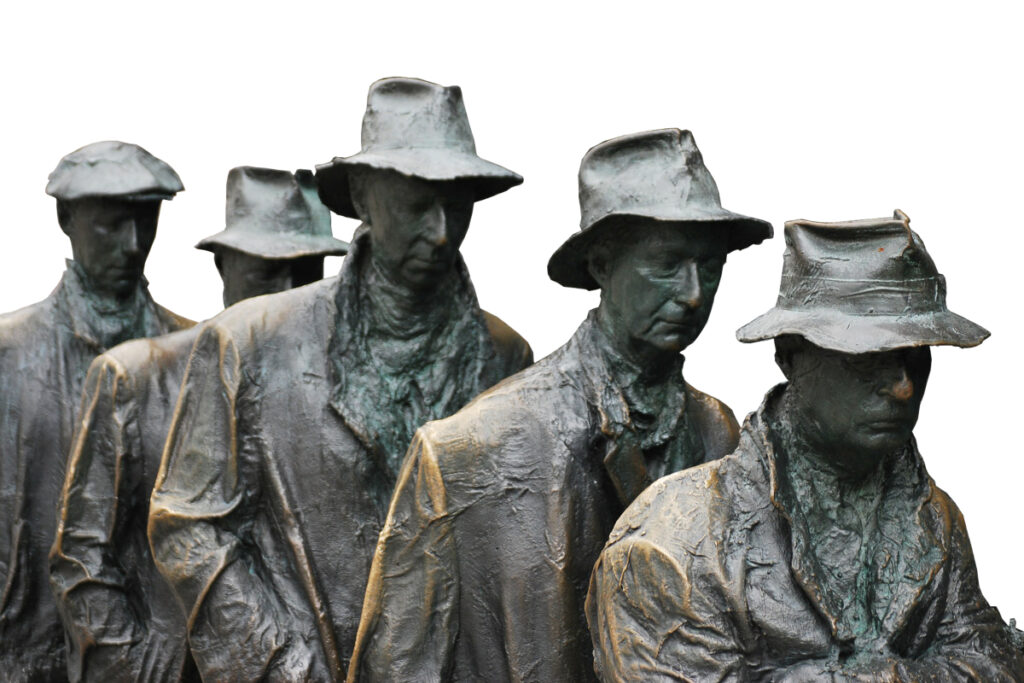
New Deal
In contrast to the US, in Europe, these same six years were those when Germany, under Adolf Hitler, was preparing for war (See Part 1) using his own version of what may be viewed by some as Hitler’s new deal. In the US, FDR’s administration was dealing with the Great Depression by implementing FDR’s New Deal, thus, attempting to revive the economy, lower unemployment, and stimulate growth. Truly, it was a challenging time for all Americans. Clearly, the US was in no way preparing for any war.
The US population in 1933 was more than 125 million, and unemployment had risen to its highest rate in US history, namely about 25 percent. FDR’s New Deal focused on greater governmental involvement, with reforms aimed at industry, finance, agriculture, labor, housing, and much more. The New Deal focused on recovery, relief, and reform (3-Rs).
US Government Programs
Some of the major programs included the Social Security Act, National Labor Relations Act, Soil Conservation Act, Federal Emergency Relief Act, Emergency Relief Appropriation, and the Rural Electrification Act. The idea was to increase government spending to end the Great Depression.
End of Great Depression – 1939
Although many economists are of the opinion that FDR’s New Deal ended the Great Depression, others may argue that its effects were weak with a somewhat weak economic recovery.
3. World War 2 – 6 YEARS 1939-1945 (Post-Depression) (FDR President until 1945; Truman President after FDR dies)
End of the Depression and Beginning of WW2
WW2 is considered to have commenced with the German invasion of Poland on September 1, 1939 [See “WWII – Simplified! Center Stage: Europe (Part 1 of 3)].” Although debatable, this date is also generally considered as the beginning of the end of the Great Depression. At this juncture, the US clearly had no interest in actively getting involved in WW2, and it remained neutral the initial two years.
Britain’s New Leadership in WW2
Eight months after the beginning of WW2, in Britain, Winston Churchill replaced Neville Chamberlain as Prime Minister on May 10, 1940.
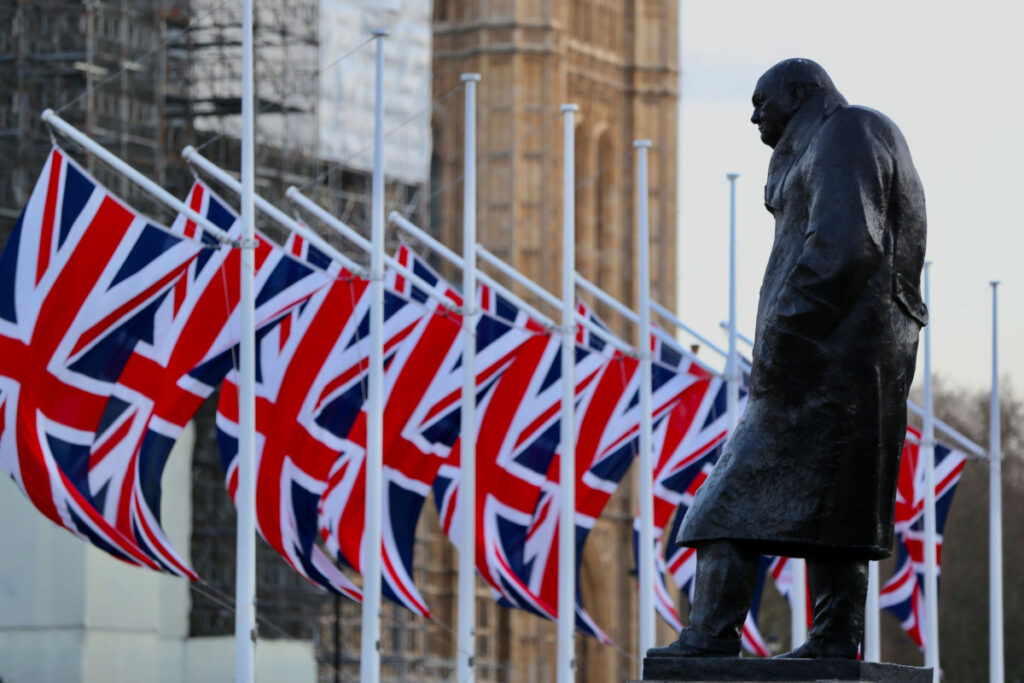
Britain’s Request for Wartime Assistance
Two months later, in July 1940, Churchill asked FDR for help after the German navy sank eleven British destroyers within ten days. Since most people in the US did not want to get involved in WW2, FDR attached ninety-nine-year leases on British bases in the Caribbean and Newfoundland in exchange for fifty destroyers.
Lend Lease Act
Another significant US development was the passing of the Lend Lease Act on March 11, 1941. It allowed the US to lend or lease war supplies to any nation considered “vital to the defense of the United States.” This provided a conduit for FDR and the US to help Britain and other US allies globally.
Although the US was considered neutral in WW2, that changed on December 8, 1941, the day after Pearl Harbor was hit by more than 350 Japanese aircraft. The US Congress declared war on the Empire of Japan, and the US entered the war.
US involvement in Europe following its entry in WW2 is detailed in “WWII – Simplified! Center Stage: Europe (Part 1 of 3).” US involvement in the East will be portrayed in Part 3.
Plot to Kill the “Big Three”
Not many are aware of an alleged Nazi assassination plot to kill the “Big Three” in 1943 at the Tehran Conference. The Big Three were Franklin D. Roosevelt (FDR), Joseph Stalin, and Winston S. Churchill, and all of them for the first time were to be in one location.
Germans broke the U.S. Naval code and learnt of a major conference that was upcoming in October 1943 in Tehran. It has been stated that Adolph Hitler approved operation “Long Jump” to assassinate all three Allied world leaders in Tehran, Iran.
This plot was to be headed by Ernst Kaltenbrunner and led by Nazi SS officer, Otto Skorzeny. Previously, Skorzeny’s missions included rescue of Benito Mussolini, and he also sent German troops in American uniforms aimed at sabotage during the Battle of the Bulge.
Fortunately, Soviet agents with Gevork Vartanian, a Soviet spy as their leader, unmasked this Nazi plot. Although German spies landed in Tehran to carry out the mission, the actions of Soviet NKVD (People’s Commissariat for Internal Affairs) resulted in the final termination of this Nazi plot.
US Homefront
Women in the Workforce
WW2 impacted the US domestic scene. With 15 million men taking part in the war activities, a void resulted in the workforce. Women partially filled this void, expanding to about 35 percent of the US workforce. Women worked in defense plants as electricians, riveters, and welders, popularizing the image of “Rosie the Riveter.” Until then, these positions were strictly for men. In addition, women also enlisted in the armed forces and worked in non-combat roles.
War Production Bond (WPB)
A month after the Pearl Harbor attack, FDR, by executive order (#9024) established the War Production Board on January 16, 1942 to direct war production and procurement of materials needed for the war. WPB helped convert peacetime industries into wartime industries. For example, automakers manufactured aircraft engines, guns, tanks, and trucks. Shipyards put out battleships, aircraft carriers, submarines, destroyers, and much more.
WPB supervised production of weapons and supplies worth $183 billion. The US and its allies produced 70 percent of global munitions (US-40 percent, Britain, USSR, and additional allies-30 percent) while the Axis powers produced only 30 percent.
Rationing
By the spring of 1942, rationing of food, gas, and clothing became a reality in the US. Families were provided with ration stamps that were used to buy most goods, including meat, sugar, butter, vegetables, fruit, gas, clothing, and fuel. Americans collected scrap metal, aluminum cans, and rubber to be recycled for production of war materials.
Patriotism
Americans bought war bonds to help the government. People depended on the radio for war news. Moviegoers were fed with newsreels focused on WW2 events prior to the feature film. Enemies such as the Nazis and the Japanese were demonized. Americans also welcomed war-related music during the years of global conflict.
During WW2, FDR, in his green light letter, stated that professional baseball should continue because it provided a needed diversion and was good for the nation’s morale.
Japanese-Americans Plight
One dark cloud that appeared after about two months following the surprise attack on Pearl Harbor was the discriminatory treatment of Japanese Americans on the West Coast. On February 12, 1942, FDR signed executive order 9066, which forced Japanese Americans to exit their homes and move to closed camps. More than 110,000 Japanese Americans were moved from California, Oregon, Arizona, and Washington to these makeshift relocation camps. Most lost their homes and businesses. Even under these dire situations, young Japanese Americans fought bravely in WW2 in Germany, Italy, and France. They became one of America’s most highly decorated combat units during WW2, namely, the US army’s 100th Infantry Battalion.
Manhattan Project
Let us look at the impact of the Manhattan Project on WW2.
Background
In 1938, nuclear fission, which is essential for an atom bomb, was discovered in Nazi Germany by Otto Hahn and Fritz Strassman by bombarding elements with neutrons in their laboratory in Berlin, less than a year prior to the commencement of WW2.
Einstein-Szilard Letter
When Leo Szilard, a Hungarian physicist who fled the Nazis and made his way to Columbia University in New York, heard of this news, he knew the Germans were close to the atom bomb. He soon met his old friend Albert Einstein, who was vacationing in Long Island, New York. The Einstein-Szilard letter signed by Einstein on August 2, 1939, was hand carried and directly read by economist Alexander Sachs to his friend FDR on October 11, 1939. This was the origin of what subsequently led to the Manhattan Project, beginning with the creation of the Advisory Committee on Uranium.
University of Chicago (UFC) – Plutonium Work
About two years and three months after the Einstein-Szilard letter, and about six weeks following the Japanese attack on Pearl Harbor, FDR formally authorizes the atomic bomb project on January 19, 1942. Five days later, on January 24, 1942 Nobel-Prize-winning professor Arthur Compton at the University of Chicago and a member of the National Defense Research Committee chose UFC for centralized plutonium work.
Establishment of the Manhattan Project
Five months later, in June 1942, Colonel James Marshall established the Manhattan Project at 270 Broadway. Manhattan was initially selected because it had the Army Corps of Engineers and physics laboratories, including those at Columbia University, uranium ore in the warehouses coming from Belgian Congo, and more. However, for security reasons, there was a relocation to laboratories in Oak Ridge, Tennessee; Hanford, Washington; and Los Alamos, New Mexico.
Los Alamos Laboratory
The Los Alamos laboratory was established on January 1, 1943. There most of the work was carried out and codenamed “Project Y.” The initial bombs were built in this location. FDR did not disclose this project to his Vice President Harry S. Truman. Only after FDR died on April 12, 1945, and Truman became president was he informed of the Manhattan Project.
Testing of the Atomic Bomb
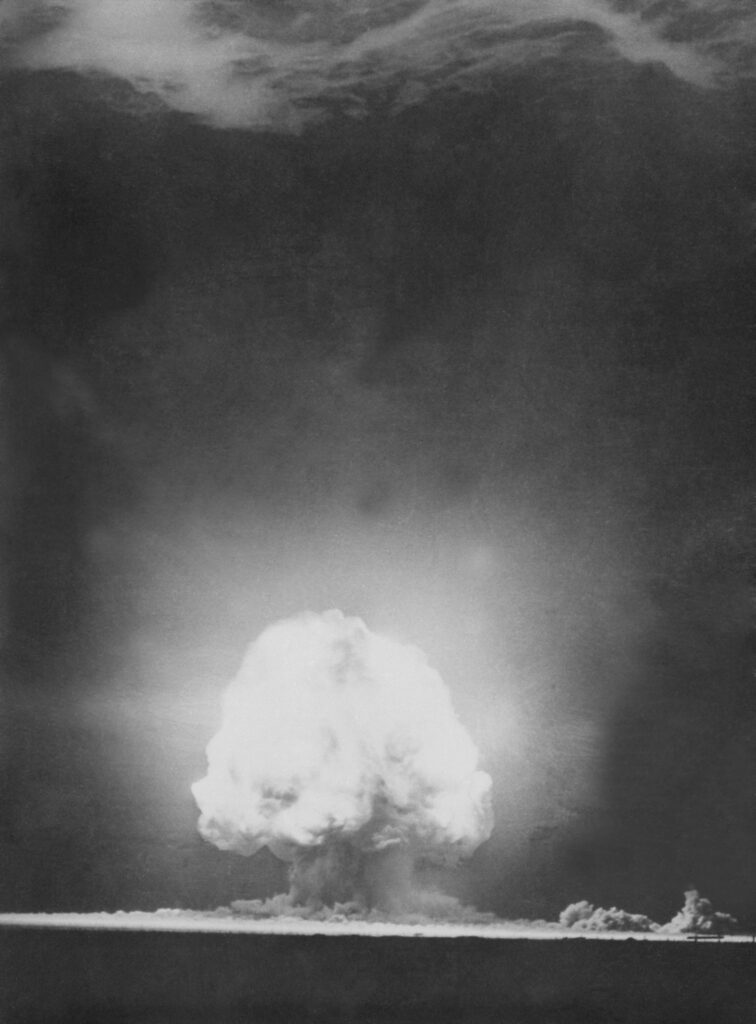
Two years later, on July 16, 1945, the first atomic bomb was successfully detonated in a desert location near Alamogordo, New Mexico. Scientists working under Oppenheimer in Los Alamos developed a uranium-based bomb called the “Little Boy” and a plutonium-based bomb named the “Fat Man.”
Germany’s Surrender
The European stage of WW2 came to a close with Germany’s unconditional surrender on May 7, 1945, following Hitler’s suicide on April 30, 1945 (See Part 1). However, the Eastern Stage was still active with Japan’s continued aggression (See Part 3, coming soon).
Potsdam Declaration for Japan to Surrender
To address the war in the East, the Potsdam Declaration issued by the US, Great Britain, and China on July 26, 1945 called for Japan’s unconditional surrender, warning otherwise it would face utter destruction. Japan did not surrender.
Atom Bomb on Hiroshima and Nagasaki
Japan’s failure to surrender meant WW2 could drag on in the Eastern Stage and potentially lead to further loss of human lives and the destruction of various countries. President Harry S. Truman had a very difficult decision to make whether to use the atomb bomb, which was the ultimate creation of the Manhattan Project. When Japanese leaders rejected the Postdam Declaration, President Truman gave the order to use the atomb bomb on Japan after August 3, 1945.
On August 6, 1945, the B-29 Enola Gay bomber plane dropped the uranium bomb “Little Boy” on Hiroshima. Three days later, on August 9th B-29 Boxcar dropped plutonium bomb “Fat Man” over Nagasaki, wiping out a five-square mile area of the former and three-square mile area of the latter city with a total loss of life exceeding one hundred thousand (See Part 3).
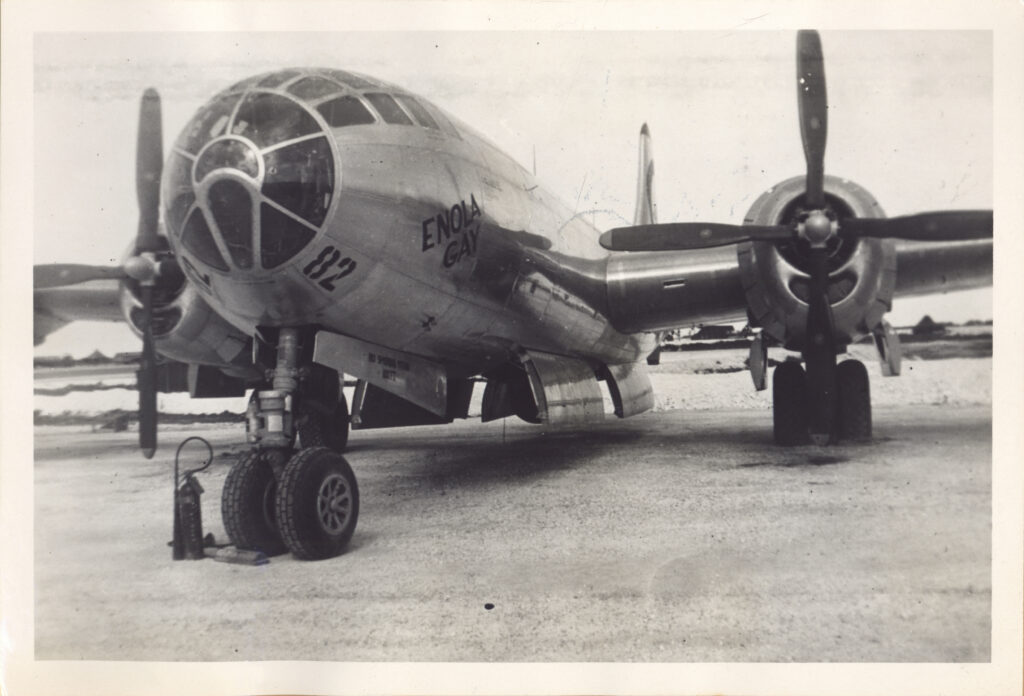
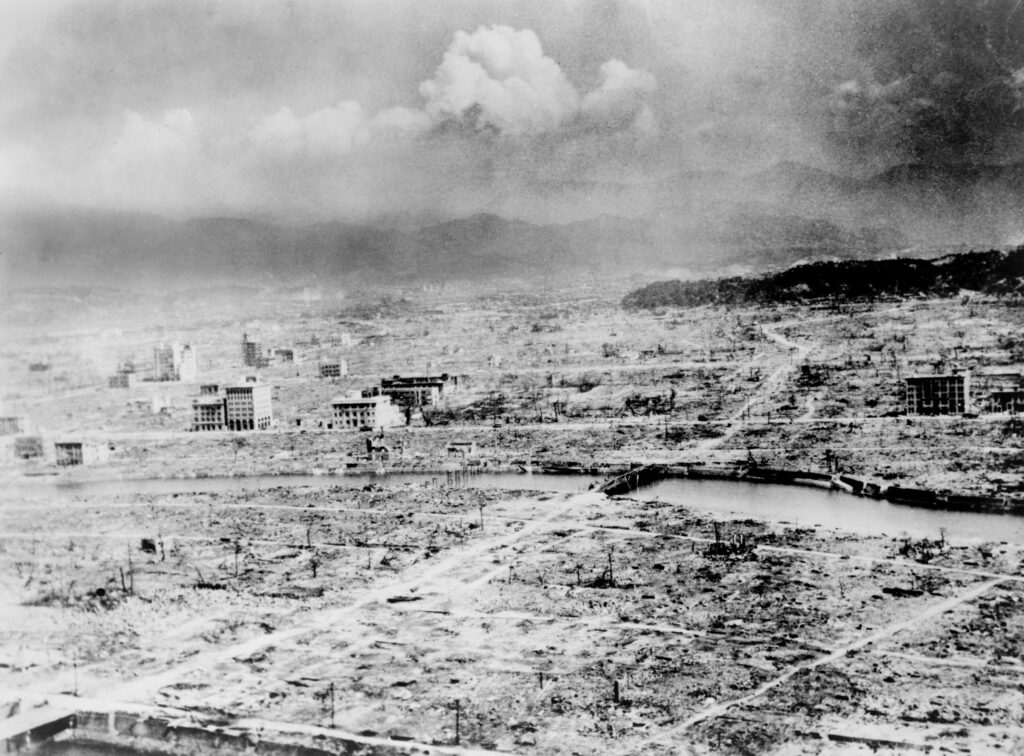

Japan’s Surrender and the End of WW2
On August 15, 1945, Japanese Emperor Hirohito announced the surrender of Imperial Japan. The surrender was formally signed on September 2, 1945, ending WW2 (See Part 3).

Final Thoughts
In conclusion, the US had a rollercoaster ride from the Roaring Twenties, to the Great Depression, to entry into WW2 following the Japanese attack on Pearl Harbor. Once in WW2, Americans were united in their war effort and made individual sacrifices for the greater good of the country, all in the spirit of American Patriotism.
The controversial use of the Atomb Bomb brought an end to another senseless war!
It is never too late for humans to learn from human mistakes!
References and Further Reading
https://www.bbc.co.uk/bitesize/topics/zqhyb9q/articles/zkb86v4
https://en.wikipedia.org/wiki/American_entry_into_World_War_I
https://www.history.com/news/world-war-i-cause-great-depression
https://www.history.com/topics/roaring-twenties/roaring-twenties-history
https://www.history.com/topics/great-depression/1929-stock-market-crash
https://spartacus-educational.com/GERunemployment.htm
https://www.thebalance.com/effects-of-the-great-depression-4049299
https://investinganswers.com/dictionary/b/black-tuesday
https://www.investopedia.com/articles/investing/011116/economic-effects-new-deal.asp
https://www.history.com/topics/world-war-ii/the-manhattan-project
https://www.archives.gov/education/lessons/fdr-churchill
https://www.ourdocuments.gov/doc.php?flash=false&doc=71
https://military.wikia.org/wiki/War_Production_Board
https://www.solpass.org/7ss/standards/MajorEvents.htm
Latest posts by DrTJ (see all)
- Emotional Intelligence: The Secret to Building Strong Relationships and Achieving Success - April 17, 2023
- Procrastination – Definition, Perspective, and Overcoming It - February 15, 2021
- Breaking Point, Boiling Point, and Beyond - February 5, 2021
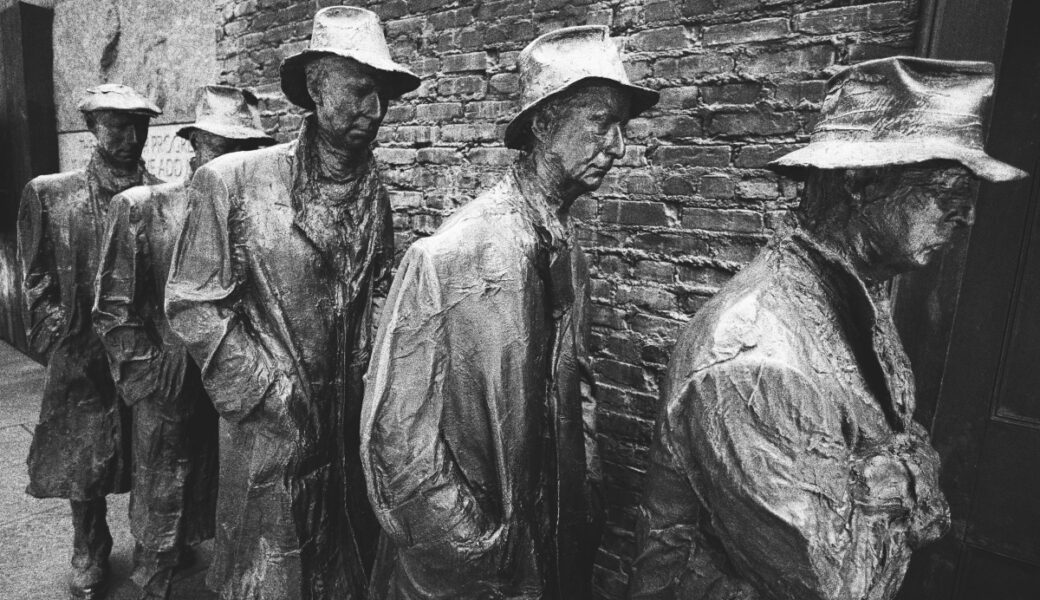
Well written. Concise and informative. Enjoyed reading. PK
Thank you for the insight into the US during the period following WW1 through its involvement in WW2. I never knew of the Nazi plan to kill ‘the big three’ . Looking forward to Part 3.
Very interesting and concise writing. All wars are senseless, and the final sentence (It is never too late for humans to learn from human mistakes!) leads one to wonder why the same themes seem to reoccur throughout human history. My take away after reading parts one and two is this:
1. No matter how much we try to avoid it, there are people in this world who are inherently evil. Unfortunately, these people are often charismatic as well. The most crucial aspect that must be considered here though, is that any attempts to appease these “tyrants” is not only futile, but dangerous. Ask any Pole or Czech (especially the Czechs) how they feel about Neville Chamberlin’s placating Hitler by ceding another country’s land and citizens worked out for them. Truly one of the most feeble and tragic attempts at “statesmanship” in history. The old adage of give them an inch and they will take (or at least demand) a foot rings true when dealing with tyrannical personalities and cultures. Appeasement for no reason other than it serves the purpose of a third party is its own kind of tyranny.
2. War creates atrocities on both sides. It is often said that WWII was merely a continuation of WWI. 100 years after the end of WWI there seems to be a general consensus that the terms of surrender the German people were forced to live under pretty much guaranteed another war. The restitution payments that were demanded were so severe and created such poverty in Germany that it can be argued that the Armistice opened the door wide for the type of charismatic tyrant (Hitler) to seize control not only of power but to also manipulate the culture of an entire people. The result? Obviously the war but we should never forget the role that culture shift played in the implementation of the Holocaust. All this due to the victor’s desire not for peace, but for revenge. The United States was not exempt from atrocities of its own. The internment of over 100,000 Japanese civilian citizens for no other reason than they looked different (after all, there were no internment camps for civilian Germans or Italians) is perhaps the single largest atrocity against the U.S. constitution in the relatively short existence of this country. Especially when you consider that the majority of those internees had their homes and business’s confiscated as well. All because they looked different.
In his first inaugural address, FDR stated that “The only thing we have to fear is feat itself.” Yet he used public fear (thus making a popular rather than ethical move) to justify his signing of Executive Order 9096. Not his best moment.
Thank you for all the hard work you have done to create this article. Looking forward to Part 3.